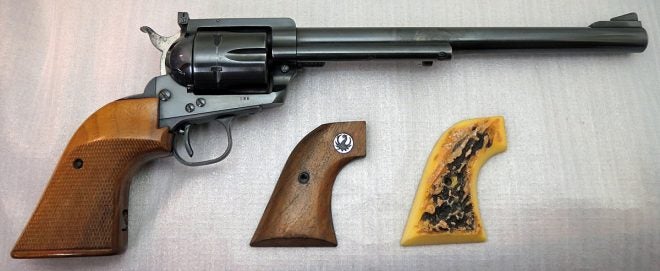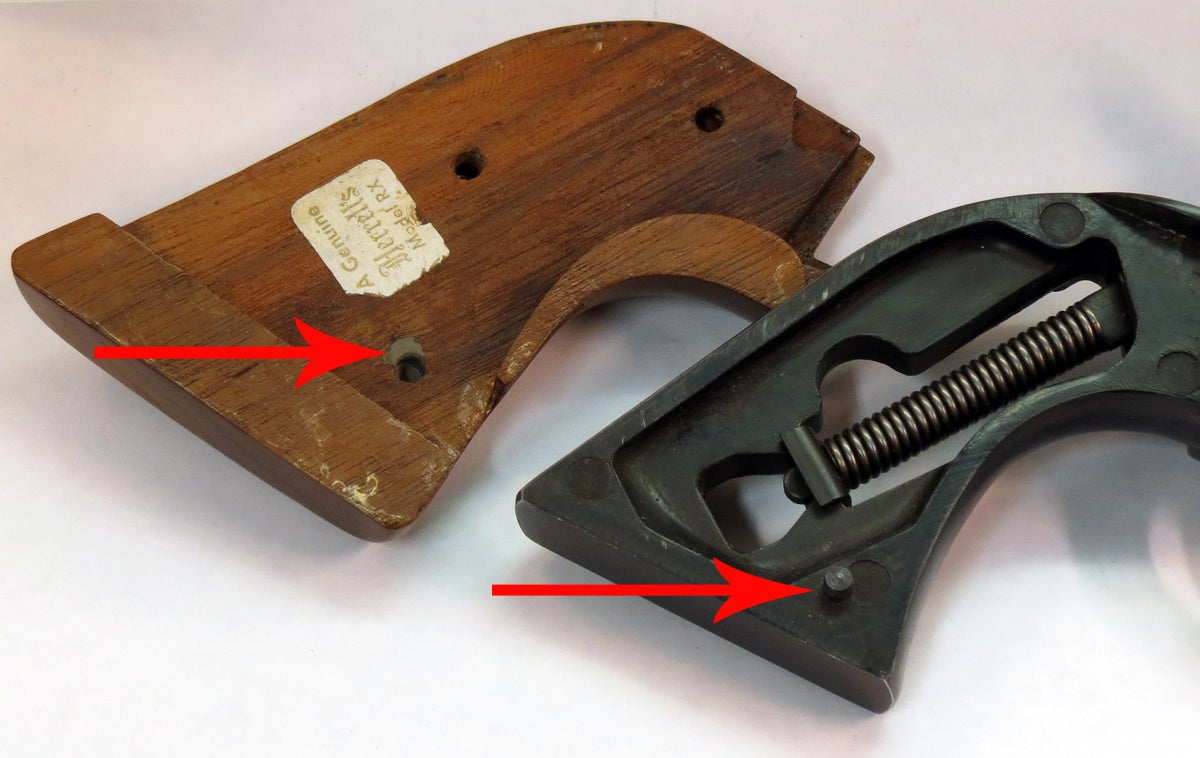Firearm Fundamentals – How to Fix Loose Revolver Grips
Russ Chastain 03.02.21

Even though most firearms will outlive their owners if given the proper care, that’s not always true of accessories and peripherals such as revolver grips. Specifically, some custom grips my father had purchased and more or less worn out long before I’d come along. When it was my turn to own and shoot the old Ruger Flat Top Blackhawk 44, the grips were so loose they’d wiggle on the frame quite a bit, so I had to figure out how to fix loose revolver grips.
Dad got the old single action 44 Magnum revolver sometime before he ever had me, and he loved that old six-shooter. He worked up a target load using wadcutter bullets he cast himself, and he would spend hours casting bullets, loading ammo, and firing at the range. He dearly loved to shoot the gun he’d named Brün Hilda, and he usually did so one-handed – and he rarely missed.
He disliked the scrawny factory grips Ruger had put on the Blackhawk, and he equally eschewed the rough-surfaced and uncomfortable “stag” grips, so he purchased a set of oversized Herrett’s Shooting Stars grips. After modifying them to fit his southpaw shooting style, he shot that old revolver so much that the grips became loose on the gun. It wasn’t a matter of tightening the screw; they simply didn’t fit anymore. I dug in to find out why, and the answer was simple.
Most revolver grips are secured by a cross-screw that pulls each grip panel towards the other, and they’re prevented from moving on the frame by some means. Many revolvers use the same system as this old Blackhawk, which is to use a square shoulder at top front of the grip and frame, and a locating pin on the frame with a corresponding hole in each grip. My problem was simply that the pin holes in the wooden grips had become ‘wallered’ out by the recoil of thousands of rounds of 44 Magnum ammunition. A look at the holes showed they were no longer round. These grips are irreplaceable; not only were they my late father’s, they hadn’t been manufactured in years.
I could have approached this in a couple different ways. One would be to use stock bedding compound to fill the holes, then apply release agent to the gun’s frame and install the grips, allowing the epoxy compound to cure to fill the elongated portion of the holes and thus re-create the original pin holes. This would have worked, but at the time I had neither the material nor the know-how to do that job.
As I pondered what to do about my loose revolver grips, I decided to simply fill the oval holes in the grips with J-B Weld epoxy. I did this, allowed it to cure, then sanded the hard gray epoxy down flush with the wood grip. That was all well and good, but then I needed to drill a nice round hole in each grip in the original location. I did so carefully, doing my best to keep the holes perpendicular with the grip’s inner surface. Although I tried to put the new holes in just the right spot, the grips were slightly mismatched when I was done.

I wanted to fit the grips to my hand anyhow, so I carefully sanded the grips while they were on the gun, to even them up and provide a better fit to my right hand. I then finished them using Birchwood Casey Tru-Oil gun stock finish, and kept on using the old six-gun. It’s been several years since I did this repair and it’s holding up fairly well, but I may need to re-work the right grip before long, as the wood around my epoxy is beginning to crack. Still, I’ve gotten considerably more life out of these grips than I would have otherwise. I hope this gives you some ideas on how you can fix loose revolver grips.